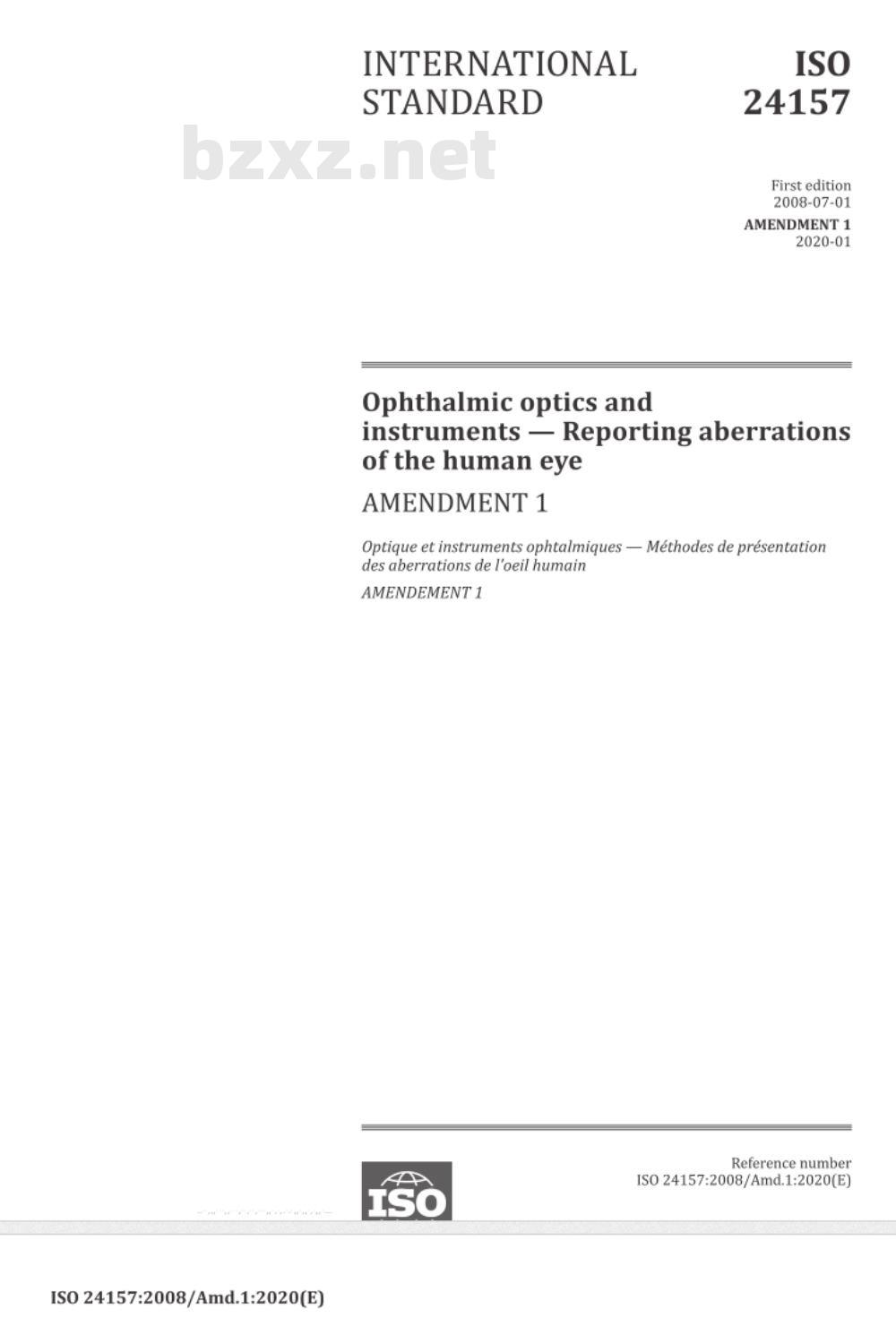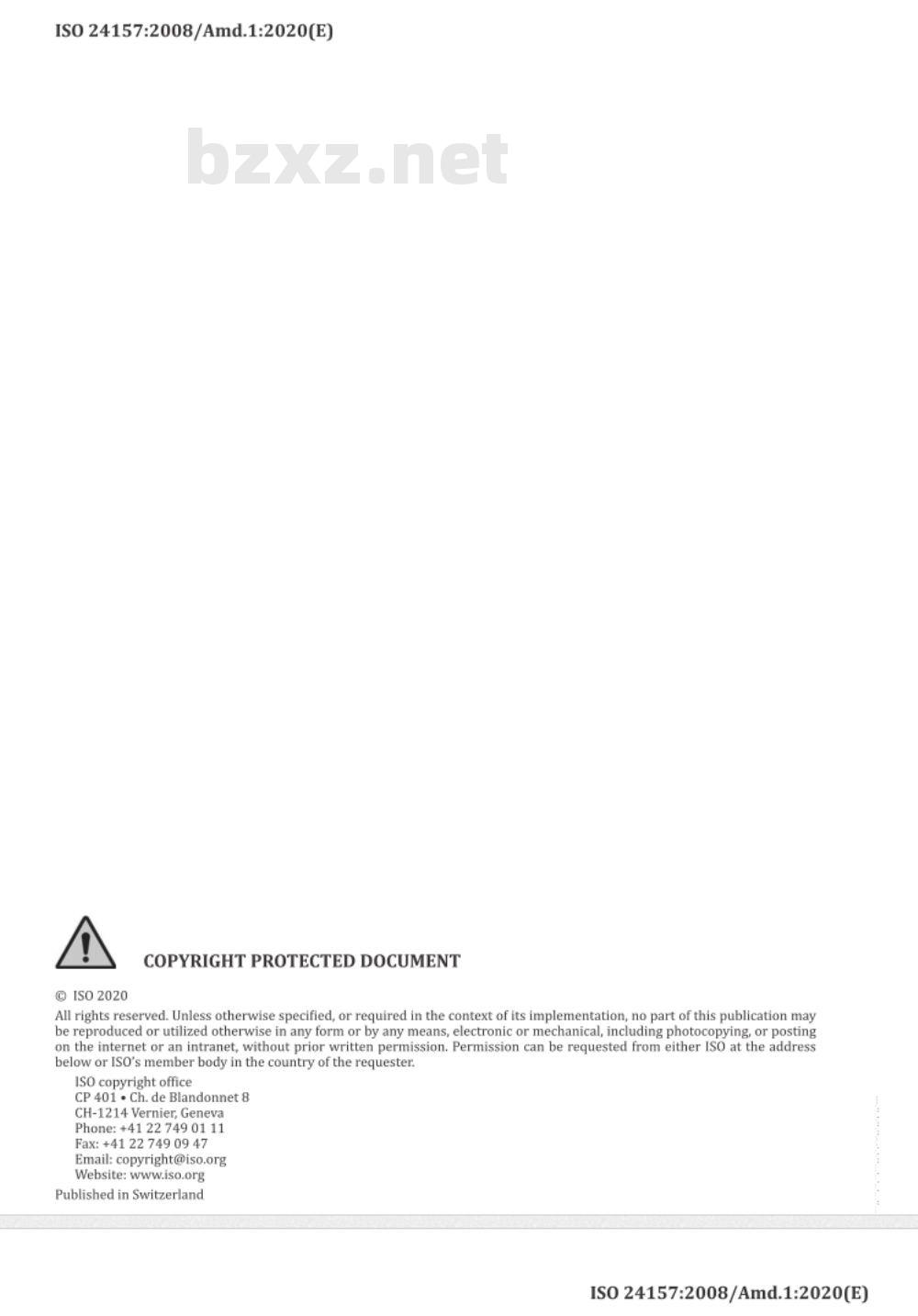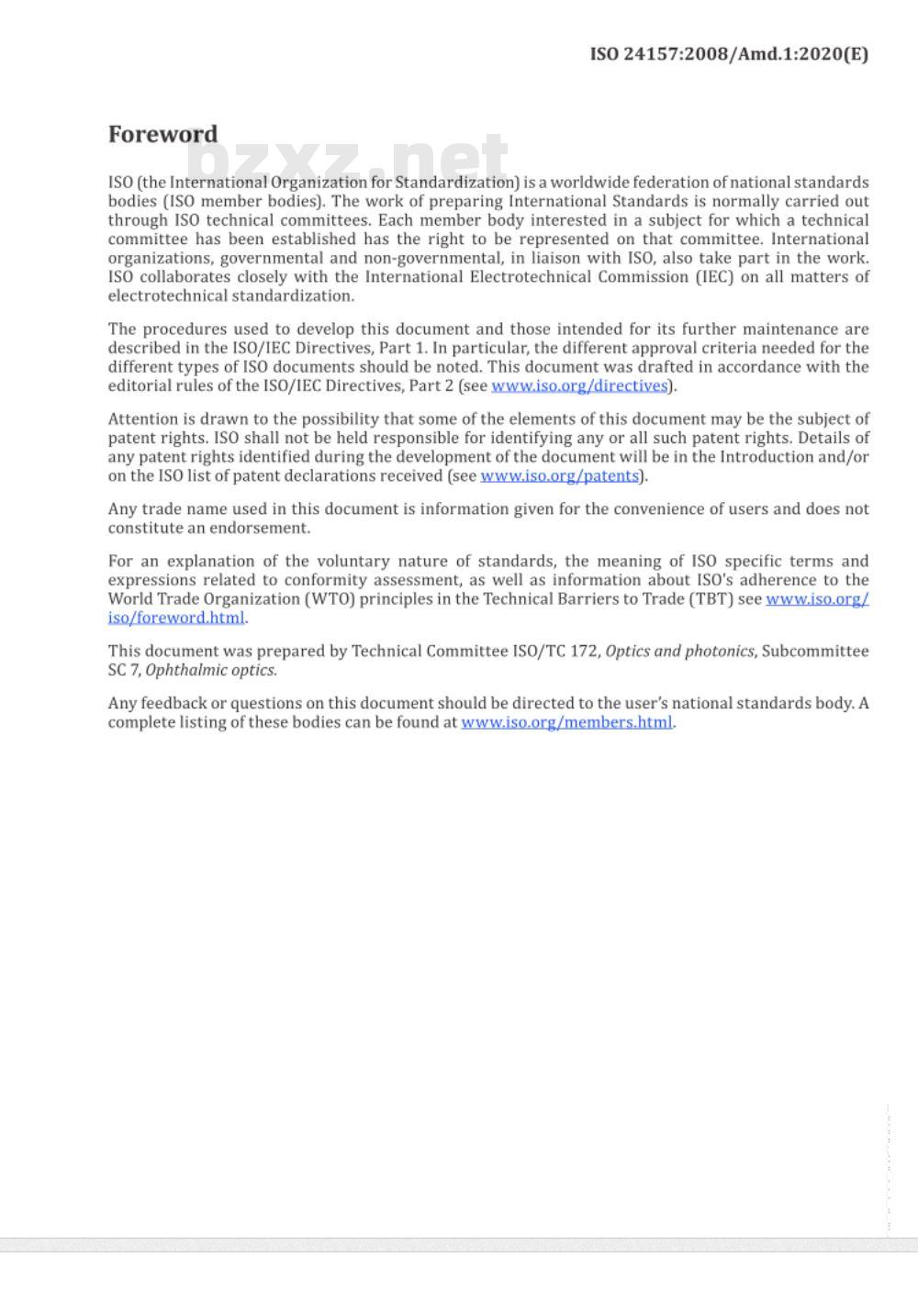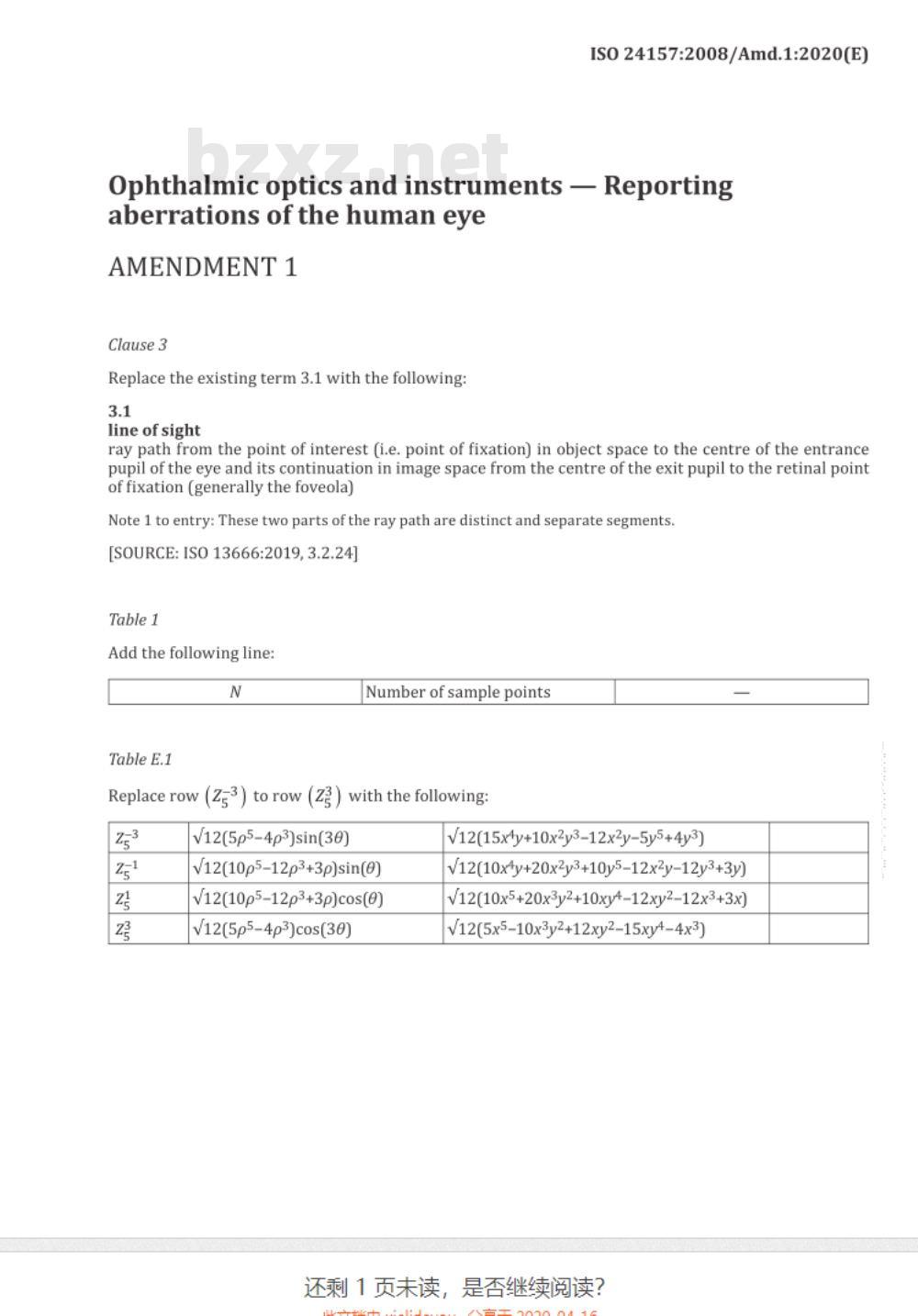HG/T 3050. 1-2020
基本信息
标准号: HG/T 3050. 1-2020
中文名称:nbsp;橡胶或塑料涂覆织物整卷特性的测定 第1部分:测定长度、宽度和净质量的方法
标准类别:化工行业标准(HG)
标准状态:现行
出版语种:简体中文
下载格式:.zip .pdf
下载大小:921047
相关标签: 橡胶 塑料 涂覆 织物 整卷 特性 测定 长度 宽度 质量 方法

标准分类号
关联标准
出版信息
相关单位信息
标准简介
HG/T 3050. 1-2020.Rubber- or plastics-coated fabrics- Determination of roll characteristics-Part 1: Methods for determination of length, width and net mass.
1范围
HG/T 3050. 1规定了测定整卷橡胶或塑料涂覆织物的长度、宽度和净质量的方法。
2规范性引用文件
下列文件对于本文件的应用是必不可少的。凡是注日期的引用文件,仅注日期的版本适用于本文件。凡是不注日期的引用文件,其最新版本(包括所有的修改单)适用于本文件。
GB/T 24133-2009 橡 胶或塑料涂覆织物调 节和试验的标准环境(idt ISO 2231:1989)。
3术语和定义
下列术语和定义适用于本文件。
3.1
有效宽度 usable width
不包括布边,性能一致、表面均匀、无不可接受缺陷的涂覆织物的宽度。
4设备
4.1测量平台
由一个平滑的水平平台组成,其长度不少于5m。长度方向应以1m为一段,沿平台两侧纵向边缘做出标记。至少其中的一段,最好是位于平台一端的一段,以1 cm为间隔标出刻度。宽度至少等于待测布卷的宽度。
4.2量尺
最小分度为1mm,其长度要大于待测布卷的宽度。
4.3秤
精确到100g.
5测量步骤
5.1通则
在测量时记录下环境温度和湿度,同时说明涂覆织物是从布卷取下直接测量的还是经过停放后测
1范围
HG/T 3050. 1规定了测定整卷橡胶或塑料涂覆织物的长度、宽度和净质量的方法。
2规范性引用文件
下列文件对于本文件的应用是必不可少的。凡是注日期的引用文件,仅注日期的版本适用于本文件。凡是不注日期的引用文件,其最新版本(包括所有的修改单)适用于本文件。
GB/T 24133-2009 橡 胶或塑料涂覆织物调 节和试验的标准环境(idt ISO 2231:1989)。
3术语和定义
下列术语和定义适用于本文件。
3.1
有效宽度 usable width
不包括布边,性能一致、表面均匀、无不可接受缺陷的涂覆织物的宽度。
4设备
4.1测量平台
由一个平滑的水平平台组成,其长度不少于5m。长度方向应以1m为一段,沿平台两侧纵向边缘做出标记。至少其中的一段,最好是位于平台一端的一段,以1 cm为间隔标出刻度。宽度至少等于待测布卷的宽度。
4.2量尺
最小分度为1mm,其长度要大于待测布卷的宽度。
4.3秤
精确到100g.
5测量步骤
5.1通则
在测量时记录下环境温度和湿度,同时说明涂覆织物是从布卷取下直接测量的还是经过停放后测
标准图片预览





标准内容
IS024157:2008/Amd.1:2020(E)
INTERNATIONAL
STANDARD
Ophthalmic opticsand
Firstedition
2008-07-01
AMENDMENT1
2020-01
instrumentsReportingaberrationsof the human eye
AMENDMENT1
Optiqueet instrumentsophtalmiquesMethodesdepresentationdesaberrationsdeI'oeilhumainAMENDEMENT1wwW.bzxz.Net
Referencenumber
IS024157:2008/Amd.1:2020(E)
IS024157:2008/Amd.1:2020(E)
COPYRIGHTPROTECTEDDOCUMENT
IS02020
All rights reserved. Unless otherwise specified, or required in the context ofits implementation, no part of this publication maybe reproduced or utilized otherwise in any form or by any means, electronic or mechanical, including photocopying, or postingon the internet or an intranet, without prior written permission. Permission can be requested from either ISO at the addressbelow orIso'smemberbody inthecountry oftherequester.ISo copyright office
cP 40i:Ch.deBlandonnet8
CH-1214Vernier,Geneva
Phone:+4122749 0111
Fax: +41 22 749 09 47
Email: copyright@iso.org
Website:www.iso.org
Published in Switzerland
IS024157:2008/Amd.1:2020(E)
Foreword
IS024157:2008/Amd.1:2020(E)
Iso (theInternational Organizationfor Standardization)isaworldwidefederationofnational standardsbodies (iso member bodies).The work of preparing International Standards is normally carried outthrough Iso technical committees. Each member body interested in a subject for which a technicalcommittee has been established has the right to be represented on that committee. Internationalorganizations, governmental and non-governmental, in liaison with Iso, also take part in the work.Iso collaborates closely with the International Electrotechnical Commission (IEC) on all matters ofelectrotechnicalstandardization.The procedures used to develop this document and those intended for its further maintenance aredescribed in the ISo/IEc Directives, Part 1. In particular, the different approval criteria needed for thedifferent types of Iso documents should be noted. This document was drafted in accordance with theeditorialrulesoftheIso/IEcDirectives,Part2(seewww.iso.org/directives).Attention is drawn to the possibility that some of the elements of this document may be the subject ofpatent rights. Iso shall not be held responsible for identifying any or all such patent rights. Details ofany patentrights identified during the development of the document will be in the Introduction and/orontheIsolistofpatentdeclarationsreceived(seewww.iso.org/patents).Any trade name used in this document is information given for the convenience of users and does notconstituteanendorsement.
For an explanation of the voluntary nature of standards, the meaning of Iso specific terms andexpressions related to conformity assessment, as well as information about Iso's adherence to theWorld Trade Organization (WTO) principles in the Technical Barriers to Trade (TBT) see Www.iso.org/iso/foreword.html.
This document wasprepared byTechnical CommitteeIso/Tc172, Optics and photonics,SubcommitteeSc7,Ophthalmicoptics.
Anyfeedback or questions on this document should be directed to the user's national standards body. Acompletelistingofthesebodiescanbefoundatwww.iso.org/members.html.IS024157:2008/Amd.1:2020(E)
Ophthalmic optics and instruments-Reportingaberrations of the human eyeAMENDMENT1
Clause3
Replacetheexistingterm3.1withthefollowing3.1
lineofsight
ray path from the point of interest (i.e. point of fixation) in object space to the centre of the entrancepupil of the eye and its continuation in image space from the centre of the exit pupil to theretinal pointoffixation (generallythe foveola)Note 1 to entry: These two parts of the ray path are distinct and separate segments[SOURCE:ISO13666:2019,3.2.24]Table1
Addthefollowingline:
Numberofsamplepoints
Replacerow(z3)torow(zg)withthefollowing:V12(5p5-4p3)sin(30)
V12(10p5-12p3+3p)sin(0)
V12(10p5-12p3+3p)cos(0)
V12(5p5-4p3)cos(30)
V12(15x*y+10x3y3-12x3y-5y5+4y3)V12(10xty+20xy3+10y512x2y-12y3+3y)V12(10x5+20x3y2+10xy4-12xy2-12x3+3x)V12(5x510x3y2+12xy215xy44x3)还剩1页未读,是否继续阅读?
IS024157:2008/Amd.1:2020(E)
ICS11.040.70
Pricebased on1 page
小提示:此标准内容仅展示完整标准里的部分截取内容,若需要完整标准请到上方自行免费下载完整标准文档。
INTERNATIONAL
STANDARD
Ophthalmic opticsand
Firstedition
2008-07-01
AMENDMENT1
2020-01
instrumentsReportingaberrationsof the human eye
AMENDMENT1
Optiqueet instrumentsophtalmiquesMethodesdepresentationdesaberrationsdeI'oeilhumainAMENDEMENT1wwW.bzxz.Net
Referencenumber
IS024157:2008/Amd.1:2020(E)
IS024157:2008/Amd.1:2020(E)
COPYRIGHTPROTECTEDDOCUMENT
IS02020
All rights reserved. Unless otherwise specified, or required in the context ofits implementation, no part of this publication maybe reproduced or utilized otherwise in any form or by any means, electronic or mechanical, including photocopying, or postingon the internet or an intranet, without prior written permission. Permission can be requested from either ISO at the addressbelow orIso'smemberbody inthecountry oftherequester.ISo copyright office
cP 40i:Ch.deBlandonnet8
CH-1214Vernier,Geneva
Phone:+4122749 0111
Fax: +41 22 749 09 47
Email: copyright@iso.org
Website:www.iso.org
Published in Switzerland
IS024157:2008/Amd.1:2020(E)
Foreword
IS024157:2008/Amd.1:2020(E)
Iso (theInternational Organizationfor Standardization)isaworldwidefederationofnational standardsbodies (iso member bodies).The work of preparing International Standards is normally carried outthrough Iso technical committees. Each member body interested in a subject for which a technicalcommittee has been established has the right to be represented on that committee. Internationalorganizations, governmental and non-governmental, in liaison with Iso, also take part in the work.Iso collaborates closely with the International Electrotechnical Commission (IEC) on all matters ofelectrotechnicalstandardization.The procedures used to develop this document and those intended for its further maintenance aredescribed in the ISo/IEc Directives, Part 1. In particular, the different approval criteria needed for thedifferent types of Iso documents should be noted. This document was drafted in accordance with theeditorialrulesoftheIso/IEcDirectives,Part2(seewww.iso.org/directives).Attention is drawn to the possibility that some of the elements of this document may be the subject ofpatent rights. Iso shall not be held responsible for identifying any or all such patent rights. Details ofany patentrights identified during the development of the document will be in the Introduction and/orontheIsolistofpatentdeclarationsreceived(seewww.iso.org/patents).Any trade name used in this document is information given for the convenience of users and does notconstituteanendorsement.
For an explanation of the voluntary nature of standards, the meaning of Iso specific terms andexpressions related to conformity assessment, as well as information about Iso's adherence to theWorld Trade Organization (WTO) principles in the Technical Barriers to Trade (TBT) see Www.iso.org/iso/foreword.html.
This document wasprepared byTechnical CommitteeIso/Tc172, Optics and photonics,SubcommitteeSc7,Ophthalmicoptics.
Anyfeedback or questions on this document should be directed to the user's national standards body. Acompletelistingofthesebodiescanbefoundatwww.iso.org/members.html.IS024157:2008/Amd.1:2020(E)
Ophthalmic optics and instruments-Reportingaberrations of the human eyeAMENDMENT1
Clause3
Replacetheexistingterm3.1withthefollowing3.1
lineofsight
ray path from the point of interest (i.e. point of fixation) in object space to the centre of the entrancepupil of the eye and its continuation in image space from the centre of the exit pupil to theretinal pointoffixation (generallythe foveola)Note 1 to entry: These two parts of the ray path are distinct and separate segments[SOURCE:ISO13666:2019,3.2.24]Table1
Addthefollowingline:
Numberofsamplepoints
Replacerow(z3)torow(zg)withthefollowing:V12(5p5-4p3)sin(30)
V12(10p5-12p3+3p)sin(0)
V12(10p5-12p3+3p)cos(0)
V12(5p5-4p3)cos(30)
V12(15x*y+10x3y3-12x3y-5y5+4y3)V12(10xty+20xy3+10y512x2y-12y3+3y)V12(10x5+20x3y2+10xy4-12xy2-12x3+3x)V12(5x510x3y2+12xy215xy44x3)还剩1页未读,是否继续阅读?
IS024157:2008/Amd.1:2020(E)
ICS11.040.70
Pricebased on1 page
小提示:此标准内容仅展示完整标准里的部分截取内容,若需要完整标准请到上方自行免费下载完整标准文档。